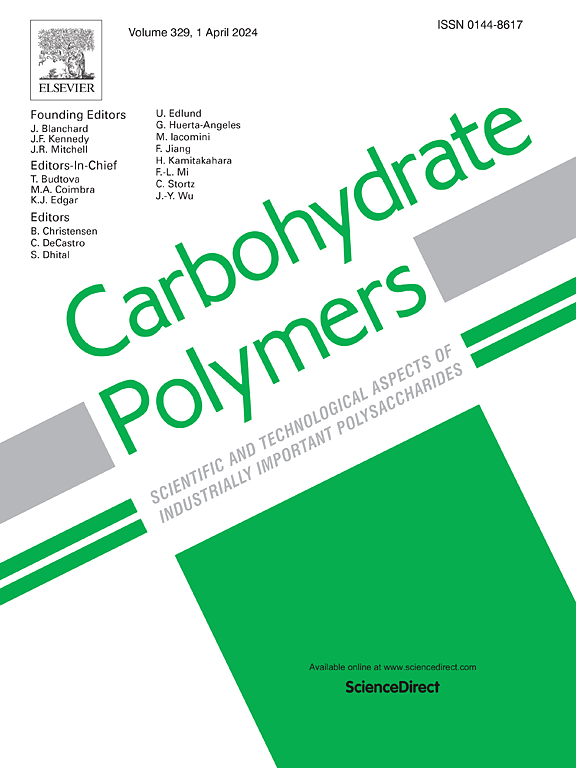Construction of AgNPs-loaded oriented hydrogel based on Periostracum Cicadae chitosan by electro-assembly for rapid hemostasis and wound healing
IF 10.7
1区 化学
Q1 CHEMISTRY, APPLIED
引用次数: 0
Abstract
Oriented hydrogels have been recognized for their ability to promote cell proliferation and enhance wound repair. Chitosan, valued for its biocompatibility and biodegradability, is widely used in hydrogel preparation. However, chitosan derived from Periostracum Cicadae (“Chantui”) has not been explored for creating antibacterial-oriented hydrogels. In this study, we successfully developed a Periostracum Cicadae chitosan-based oriented hydrogel (O-CH) using an electro-assembly method. The O-CH hydrogel exhibited superior hemostatic performance and mechanical strength, with stress levels 7.6 times higher than those of traditional alkali-neutralized hydrogels. Subsequently, silver nanoparticles (AgNPs) were formed in situ on the O-CH hydrogel without the need for additional reducing agents or stabilizers, yielding O-CH@Ag20, which exhibited excellent biocompatibility and enhanced antibacterial properties. In an S. aureus-infected full-thickness rat skin defect model, O-CH@Ag20 reduced bacterial counts at the wound site by 6-fold compared to the gauze group on day 3 and achieved a 97 % wound healing rate by day 10, versus 75 % in the gauze group. Histological analysis revealed that O-CH@Ag20 regulated angiogenesis, collagen deposition, and fibroblast differentiation into myofibroblasts, thereby accelerating wound contraction during remodeling. This study presents a novel approach to addressing clinical challenges in infected wound healing using Periostracum Cicadae chitosan-based antibacterial hydrogels.

求助全文
约1分钟内获得全文
求助全文
来源期刊

Carbohydrate Polymers
化学-高分子科学
CiteScore
22.40
自引率
8.00%
发文量
1286
审稿时长
47 days
期刊介绍:
Carbohydrate Polymers stands as a prominent journal in the glycoscience field, dedicated to exploring and harnessing the potential of polysaccharides with applications spanning bioenergy, bioplastics, biomaterials, biorefining, chemistry, drug delivery, food, health, nanotechnology, packaging, paper, pharmaceuticals, medicine, oil recovery, textiles, tissue engineering, wood, and various aspects of glycoscience.
The journal emphasizes the central role of well-characterized carbohydrate polymers, highlighting their significance as the primary focus rather than a peripheral topic. Each paper must prominently feature at least one named carbohydrate polymer, evident in both citation and title, with a commitment to innovative research that advances scientific knowledge.
 求助内容:
求助内容: 应助结果提醒方式:
应助结果提醒方式:


